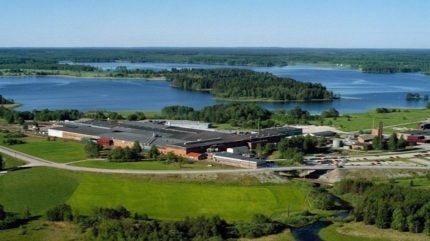
A green gas nozzle is shown against a light gray background with a leafy green plant coming out of the metal nozzle.
Fossil fuels have powered our transition into the modern world. Without fossil fuels, for example, we wouldn’t be able to drive to the store to pick up milk, much less fly across the country (or around the world) to keep up with our far-flung friends and family. We wouldn’t be able to order the consumer products we want for next-day delivery, or even heat and cool our homes.
Get to know and directly engage with senior McKinsey experts on sustainable fuels
Bernd Heid and Humayun Tai are senior partners in McKinsey’s New York office; Daniel Riefer is a partner in the Munich office, where Martin Linder is a senior partner; Mark Patel is a senior partner in the Bay Area office; Ole Rolser is a partner in the Amsterdam office; and Tapio Melgin is a partner in the Helsinki office.
But the use of fossil fuels is, of course, contributing to the rapid warming of our planet—and accelerating consequences that threaten the stability of our way of life. As organizations take steps to reduce their climate impact, leaders are increasingly considering the potential of sustainable fuels. McKinsey estimates that sustainable fuels represent one of 12 technologies that, collectively, could reduce total human-made greenhouse gas emissions by as much as 90 percent if they were deployed together at scale. The sustainable aviation fuels (SAFs) already certified for use in today’s jet engines, for example, produce about 80 percent less greenhouse gas emissions than traditional jet fuel.
What are sustainable fuels, and how can we scale up their use to the extent required to prevent the most catastrophic effects of global warming? Read on to find out.
Learn more about McKinsey’s Sustainability and Oil & Gas Practices.
What are the different types of sustainable fuels?
Sustainable fuels include the following:
-
Conventional biomass-based fuels are produced from organic matter, including food crops. These fuels are typically blended with small amounts of conventional fossil fuels.
Ethanol is a well-known conventional biofuel. First-generation ethanol is made from corn, while second-generation ethanol is produced from residues such as bagasse, a byproduct of sugarcane processing. Ethanol is used primarily in gasoline blends.
Other biofuels include fatty acid methyl ester (FAME), a type of biodiesel derived from either vegetable oils or animal fats. Biomethanol is produced from agricultural residues, woody biomass, or byproducts from pulp mills. And biogas is produced through the anaerobic digestion of waste streams such as manure, food waste, or wastewater.
- Drop-in sustainable fuels can be used in existing, conventional internal combustion engines (ICE). These can be produced from either edible or residue biomass sources by using low-carbon hydrogen or by synthesizing sustainable captured carbon and low-carbon hydrogen. Drop-in fuels have already been used as replacements for diesel, jet fuel, and natural gas.
- Non-drop-in e-fuels or hydrogen-based fuels are manufactured by using captured carbon and hydrogen from low-carbon electricity sources (such as renewable or nuclear energy). Low-carbon hydrogen produced through electrolysis is also sometimes known as liquid hydrogen or gaseous hydrogen. When hydrogen is combined with acceptable sources of carbon, it can form e-fuels such as e-methanol or e-ammonia.
Are sustainable fuels becoming more widely used?
Yes, and although some sustainable-fuel industries are still nascent, McKinsey research indicates that most sustainable fuels (other than clean hydrogen) are projected to see significant growth by 2030; by 2050, McKinsey expects demand for sustainable fuels to quadruple. Depending on net-zero ambitions across countries, the share of demand for sustainable fuels could account for as much as 37 percent of all energy used in the transportation sector.
But sustainable fuels will need to be produced responsibly and with other sectors and regions in mind. The use of edible oils and sugar crops to produce sustainable fuels must be carefully balanced with the need to satisfy human food consumption, especially given food shortages in various parts of the world. Meeting the growing demand for sustainable fuels will require significant growth in feedstocks beyond oils and sugars, including renewable fuels from nonbiological origins. The regulation of feedstocks is likely to play a critical role in the evolution of sustainable-fuel demand.
Learn more about McKinsey’s Sustainability and Oil & Gas Practices.
Why do we need sustainable fuels when electric vehicles are becoming more popular?
Battery-powered electric vehicles are becoming increasingly popular in the passenger vehicle segment. But the electrification of commercial heavy transportation, including planes, ships, trucks, and buses, is expected only in the longer term. Greenhouse gas reduction targets in most countries will need to be met before the electrification of these kinds of vehicles is complete, which means the use of sustainable fuels in existing ICE fleets will be needed to close that gap.
How is investment in sustainable fuels evolving?
Investment in sustainable fuels is gaining momentum. As of 2022, there was a pipeline of up to $50 billion in total investment planned, of which about 70 percent was already committed. But significant further investment—as much as $1.4 trillion—is needed by 2040 to meet the world’s decarbonization commitments.
Learn more about McKinsey’s Sustainability and Oil & Gas Practices.
How can the aviation industry help scale sustainable-fuel production?
Sustainable aviation fuel has the potential to contribute significantly to the abatement of greenhouse gas emissions in the aviation industry—by up to 50 percent, depending on the airline, according to McKinsey analysis.
But the SAF industry is still in its infancy. In 2024, production capacity will not exceed 1.5 million metric tons (Mt), barely 0.5 percent of total jet fuel needs, according to International Air Transport Association estimates. But McKinsey expects demand will rise, due to regulation and airline commitments. Based on the largest airlines’ voluntary pledges as well as mandates, airlines could use more than 20 million Mt of sustainable aviation fuel by 2030. The challenge, according to United Airlines CEO Scott Kirby, “is not that supply is limited. The issue is creating supply.”
In the retail market, SAF currently costs around three times more than traditional jet fuel. Airlines would likely need to pass on some of these costs to customers via green premiums. In June 2024, Lufthansa, considered a leader in this space, introduced an environmental cost surcharge for flights departing from EU-27 countries.
Aviation stakeholders can play an important role in facilitating the investment needed to expand production capacity. Here are four actions they can take:
- Individual agreements, known as “offtake” agreements, involve airlines agreeing to purchase fuel from fuel providers. The recent 980-million-liter deal between IAG International Airlines Group and Twelve indicates the industry’s readiness for substantial agreements.
- Partnerships and consortiums enable industry stakeholders to collaborate to pool demand. These arrangements are similar to offtake agreements that involve individual airlines but include multiple stakeholders—in some cases, even end customers such as corporations seeking to decarbonize their air travel.
- Direct investments from individual airlines into suppliers or projects are a viable strategy. For example, Norwegian Airlines and Cargolux invested in Norsk e-Fuel’s power-to-liquid plant in Norway.
- SAF funds are typically set up by partners with a common interest in scaling production. Partners could include investors, scaled players in the SAF supply chain, other airlines and airports, aircraft manufacturers, or corporate customers looking to mitigate their Scope 3 emissions. These funds are relatively small—typically less than €500 million—so they will be able to provide only early funding rounds.

How can existing petroleum refineries be converted to produce sustainable fuels?
Petroleum refineries around the world are under pressure to ramp up sustainable-fuel production from a range of factors, such as changing market conditions, evolving environmental regulations, and higher costs. In response, leaders in the petroleum industry are looking to convert existing refineries to produce sustainable fuels such as renewable diesel and sustainable aviation fuel. This kind of conversion can be faster and more cost effective than constructing brand-new production facilities for renewable fuel.
The major considerations for converting existing refineries include the availability of feedstock and the plant’s current configuration and production capacity. Refineries that are close to big cities will have access to a steady supply of used cooking oil, for example, whereas those close to ethanol production facilities will have access to soybean oil or distillers corn oil. Government incentives to make these changes vary by region, as does market demand.
Learn more about McKinsey’s Sustainability and Oil & Gas Practices. And check out job opportunities related to sustainable fuels if you’re interested in working with McKinsey.
Articles referenced:
- “Global Energy Perspectives 2024,” September 17, 2024
- “The energy transition: Where are we, really?,” August 27, 2024, Diego Hernandez Diaz, Humayun Tai, and Thomas Hundertmark, with Michiel Nivard and Nicola Zanardi
- “How the aviation industry could help scale sustainable fuel production,” July 22, 2024, Axel Esqué and Daniel Riefer, with Geert Mulder
- “What would it take to scale critical climate technologies?,” December 1, 2023, Bernd Heid, Martin Linder, Sebastian Mayer, Anna Orthofer, and Mark Patel
- “How traders can capture value in sustainable fuels,” October 4, 2023, Tapio Melgin, Agata Mucha-Geppert, Xavier Veillard, and Andrew Warrell
- “Converting refineries to renewable fuels: No simple switch,” June 21, 2023, Tim Fitzgibbon, Khush Nariman, and Brian Roth
- “Charting the global energy landscape to 2050: Sustainable fuels,” July 7, 2022, Nathan Lash, Tapio Melgin, Agata Mucha-Geppert, and Ole Rolser





